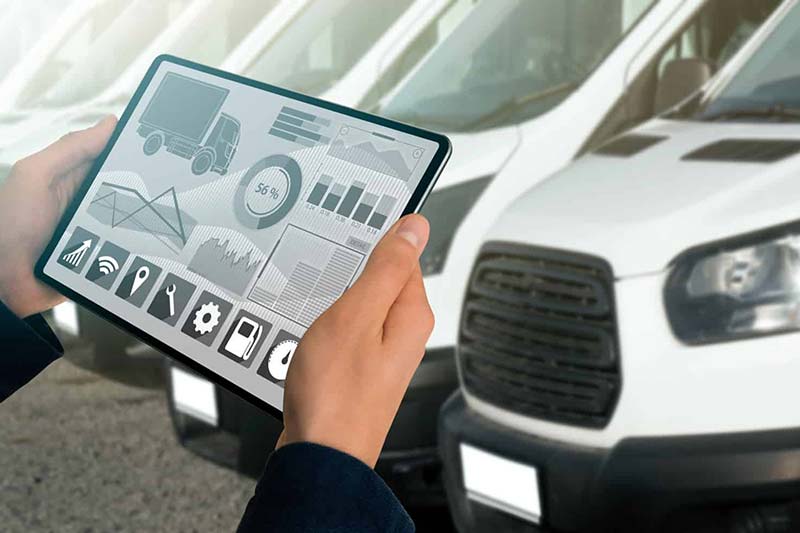The electrification of vehicle fleets, large and small, is an established and inevitable trend. The world is electrifying, and our vehicles and transportation sector are key components in reducing greenhouse gases and building smarter, more livable cities for us all.
In the private sector, an RMI report found that 81% of fleet managers representing delivery services, utilities, and local and state governments have already begun electrifying their vehicle fleets. However, efforts have been relatively slow-going due to the long-term capital project planning required and the overall complexity inherent in fleet electrification. Despite these challenges, most fleet operators recognize that fleet electrification will be well worth the cost and effort, with the potential for significant cost savings across vehicle classes.
The federal government is also recognizing the potential environmental and financial benefits of going electric. With executive orders and policy proposals, the Biden administration has made it clear that investing in electric vehicles (EVs) is a priority and an essential strategy for improving U.S. economic standings and meeting national emission reduction goals.
Federal Fleet Electrification Efforts
It was a mere five days into the new Biden administration when the president signaled a strengthened stance on elective vehicles and that the federal fleet would help lead the charge.
“The federal government also owns an enormous fleet of vehicles, which we’re going to replace with clean electric vehicles made right here in America made by American workers,” said President Biden. According to the president, the federal fleet electrification effort would represent “the largest mobilization of public investment in procurement, infrastructure, and R&D since World War II.”
The president’s comment was tied to the “Buy America” Executive Order he signed on January 25th this year that strengthened the government’s spending preferences on American-made goods.
Although EVs have yet to enter the federal fleet in large quantities, they see a wide variety of uses at smaller scales. So far, the General Services Administration (GSA), the mandatory provider of non-tactical vehicles for the federal government, has purchased EVs for 35 different federal agencies, including sedans, SUVs, and cargo vans. As of July 2020, the federal fleet of vehicles numbers around 645,000, with just 3,215 EVs.
Despite the president’s call for all-electric vehicles, the pace at which the federal fleets will electrify is hard to know. Unfortunately, the recent winning bid for the new US Postal Service delivery vehicle includes both electric powertrains and fuel combustion engines. Time will tell how quick this all-electric initiative will take to get off the ground, but we will be paying close attention as the federal government releases more concrete goals and timelines.
Regardless of how long it takes for the federal fleet electrification project to get going, the estimated quantity and consistent demand for EVs from the U.S. government will still significantly boost the EV industry over the coming decades.
Trillions For Infrastructure Improvements Including Electrification
The Biden administration’s mammoth infrastructure plan, the American Jobs Plan, wants to put $2.3 trillion toward a wide variety of infrastructure, including supporting electrification efforts. In order to “win the EV market,” $174 billion has been earmarked for the EV industry, including $25 billion for electric transit vehicles. Having the federal government, which spends over half a trillion dollars buying goods and services each year, focus its purchasing power on electrification will be a significant benefit to EV producers and supportive industries.
The iconic yellow school bus is a popular first target for electrification. For the most part, America’s approximately 480,000 school buses are almost exclusively diesel-powered, meaning students often get exposed to diesel exhaust simply by catching a ride to school. Part of the American Jobs Plan is a Clean Buses for Kids program that designates $20 billion towards school bus electrification. A similar program was just introduced to the House and Senate via the Clean Commute for Kids Act, which asks for $25 billion for bus electrification, starting with communities with disproportionately poor air quality.
The American Jobs Plan is currently being negotiated. It will most likely be split into separate bills to aid its passing, so timelines for when promised funding and incentives will arrive are unknown. While these plans and legislation have not yet been implemented, the EV and fleet electrification industry at large should be ready for a serious acceleration in adoption and scale as the federal government—and ultimately the private sector—increases its demand for electric vehicles and relevant infrastructure.


0 Comments